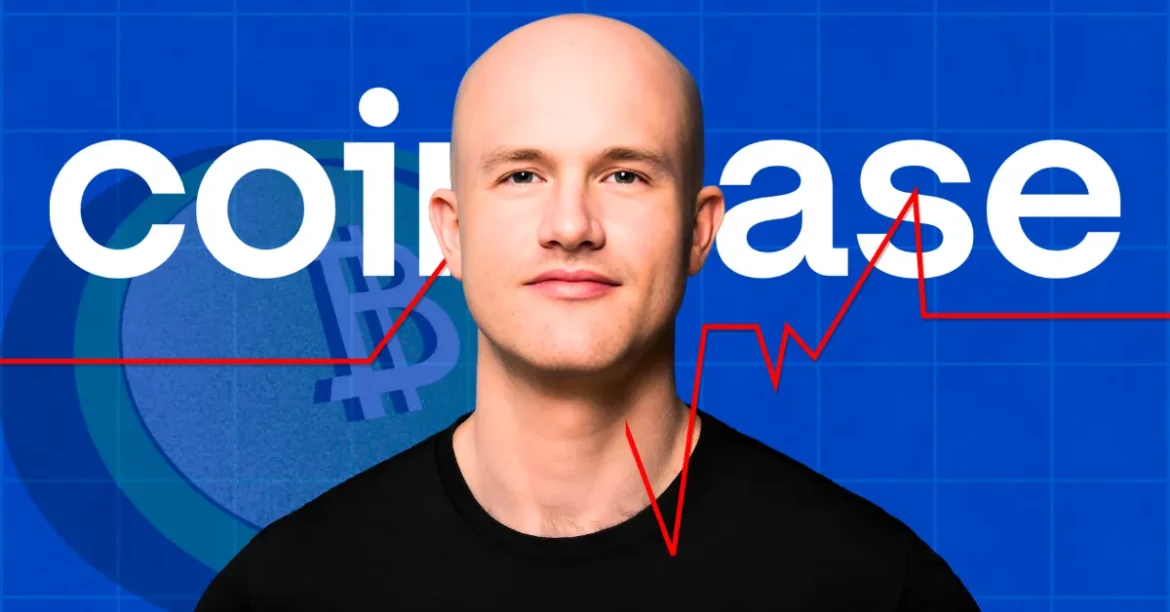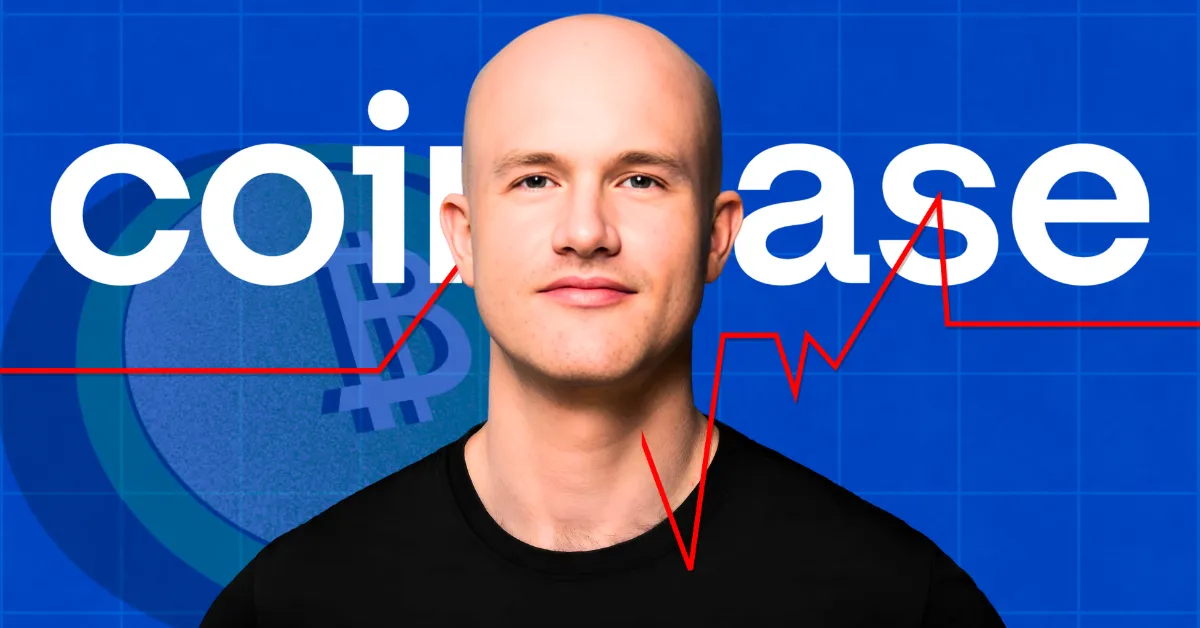Brian Armstrong’s recent disclosures and public statements provide a compelling glimpse into Coinbase’s pivotal role in the evolving cryptocurrency landscape. The company’s dominance in the crypto ETF market, institutional custody services, and strategic Bitcoin accumulation underscores its influence and leadership under Armstrong’s vision. This analysis explores Coinbase’s strategic positioning, market influence, and future trajectory, highlighting how the exchange has capitalized on the surge in Bitcoin ETFs, institutional adoption, and expanding asset holdings.
Coinbase’s Commanding Position in the Crypto ETF Market
One of the most striking revelations is that Coinbase holds approximately 81% of the cryptocurrency backing U.S.-based exchange-traded funds (ETFs), underscoring its status as the premier custodian trusted by major institutional players. Brian Armstrong has stated that Coinbase Prime, the institutional trading platform, serves 8 of the top 10 crypto firms, further cementing Coinbase’s dominance among professional investors. This dominant custody share in crypto ETFs creates a notable moat, enabling Coinbase to benefit directly from inflows. For example, spot Bitcoin ETFs attracted $1.3 billion in inflows over just one recent week, extending a multi-week growth streak.
Coinbase’s involvement with ETFs positions it at the forefront of institutional asset flows entering crypto. The firm controls custody over nearly 90% of a $36 billion market associated with Bitcoin ETFs, a remarkable concentration that highlights Coinbase’s centrality in digitizing traditional investment mechanisms on the blockchain. This dominance not only solidifies Coinbase’s role as a custodian but also enhances its reputation as a trusted intermediary in the crypto space. The company’s ability to secure such a significant share of the ETF market is a testament to its robust infrastructure, regulatory compliance, and institutional-grade security measures.
Strategic Bitcoin Accumulation Aligned with Market Growth
Armstrong also unveiled that Coinbase is systematically increasing its Bitcoin holdings weekly, signaling a long-term bullish stance on the cryptocurrency’s value and utility. This strategic accumulation reflects confidence in Bitcoin’s growth trajectory, reinforcing Coinbase’s role not only as an exchange but also as an active market participant and investor. Multiple reports echo Coinbase’s increasing treasury accumulation coinciding with its expanding client base and trading volumes, driven partly by the ETF-induced hype cycle.
Such positioning showcases Coinbase’s dual role: serving customers while building its own asset base, thus aligning corporate fortunes with broader market appreciation in digital assets. By accumulating Bitcoin, Coinbase not only benefits from potential price appreciation but also strengthens its balance sheet, providing a buffer against market volatility. This strategy also sends a strong signal to the market about the company’s belief in the long-term viability of Bitcoin, potentially attracting more institutional investors who seek a stable and trusted partner in the crypto space.
Institutional Adoption and Crypto Integration: The Road Ahead
According to Armstrong, institutional adoption of cryptocurrency—and Bitcoin in particular—is reaching a tipping point. He foresees mainstream U.S. financial portfolios integrating crypto assets, with Bitcoin ETFs playing a critical role in this widespread adoption. Cagey and tactical, Armstrong emphasizes that these ETFs create a “win-win” scenario for Coinbase and the broader crypto industry by channeling new pools of capital into easily accessible, regulated investment products.
Armstrong predicts that Bitcoin and cryptocurrencies will soon be woven into institutional balance sheets, vendor payments, and even employee payrolls. This vision aligns with recent statements pointing toward a future where digital assets are fundamental to everyday financial operations rather than niche speculative instruments. The integration of crypto into traditional financial systems is a significant milestone, and Coinbase is well-positioned to capitalize on this shift. By offering a suite of institutional-grade services, including custody, trading, and asset management, Coinbase is poised to become a one-stop shop for institutions looking to enter the crypto market.
Navigating Regulatory and Market Challenges
While Coinbase enjoys a strong market position, its dominance is not without challenges. The recent approval of new spot Bitcoin ETFs is altering the landscape, introducing increased competition and potential shifts in capital flows. Some analysts express unease about how competition might erode Coinbase’s market share or compress revenue from traditional trading fees. Nevertheless, Armstrong remains confident, stressing the interdependent growth of Coinbase and the entire crypto ecosystem.
Furthermore, Coinbase is actively engaging regulators and lawmakers in pursuit of clearer frameworks, betting on the U.S. market as a long-term crypto innovation hub. Armstrong’s advocacy for regulatory clarity and Coinbase’s proactive product launches—including the imminent introduction of regulated perpetual-style futures—illustrate a strategic blend of innovation and compliance to fortify the company’s market footing. By working closely with regulators, Coinbase aims to create a more stable and predictable environment for crypto investments, which can attract more institutional players and foster long-term growth.
Diversification Beyond Exchange Revenue
Armstrong has underscored that Coinbase is broadening its revenue streams beyond transaction fees. The company now generates income from custody services, institutional partnerships, and derivative products. This diversification strengthens Coinbase’s resilience amid market volatility, regulatory unpredictability, and intensified competition.
Moreover, Coinbase’s pursuit of regulated perpetual futures marks a significant step toward offering sophisticated crypto trading instruments domestically, reducing reliance on offshore platforms and expanding the company’s footprint in advanced derivatives markets. By diversifying its revenue streams, Coinbase is better equipped to weather market downturns and regulatory challenges. This strategy also allows the company to tap into new sources of income, ensuring sustained growth and profitability.
Coinbase: The Last Man Standing in Crypto Leadership
In a landscape marked by turmoil—with high-profile exits and legal challenges facing other crypto leaders—Brian Armstrong remains a steady figurehead navigating Coinbase through both opportunity and adversity. The company’s launch of a layer-2 blockchain and derivatives exchange, along with strategic acquisitions and ongoing Bitcoin purchases, positions Coinbase to capitalize on the next wave of crypto market expansion.
His steadfast bullishness, despite market volatility and competitive pressures, and his emphasis on blockchain’s transformative potential underline Coinbase’s mission to mainstream cryptocurrency. Armstrong’s leadership has been instrumental in steering Coinbase through turbulent times, and his vision for the company’s future remains unwavering. By focusing on innovation, regulatory compliance, and strategic partnerships, Coinbase is well-positioned to maintain its leadership role in the crypto industry.
Conclusion
Brian Armstrong’s disclosures and company strategy reveal Coinbase not just as an exchange, but as a foundational pillar in the institutional crypto economy. Dominating custody for the lion’s share of crypto ETFs, continuously building Bitcoin reserves, and expanding product offerings position Coinbase to benefit profoundly from the accelerating institutional embrace of digital assets.
While regulatory and market headwinds persist, Armstrong’s leadership embodies a blend of visionary bullishness and pragmatic adaptability. Coinbase’s sustained innovation, regulatory engagement, and growing asset base mark it as a key architect of crypto’s integration into mainstream finance, shaping the future where digital currencies become pervasive in portfolios and payment systems.
In sum, Brian Armstrong’s Coinbase is carving out an enduring legacy as the crypto ecosystem’s custodian of choice, a driver of ETF-related inflows, and a strategic investor in Bitcoin itself, affirming the company’s dominance and influence in the global digital asset revolution.





